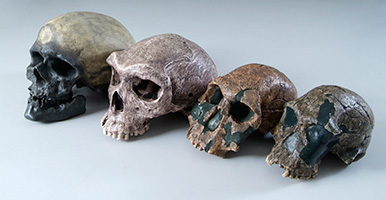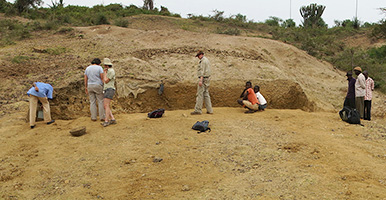Forensic anthropology
Recovering, identifying, and interpreting human remains from criminal and humanitarian contexts.
Working to strengthen the science and support forensic practice through applied research. Developing new methods to detect buried remains and predict deposition sites; producing new standards for identification of the deceased including the assessment of sex, age, and population affinity; utilising new technology to visualize cut marks and thermal damage to bone.
Members of the group are highly experienced in the application of anthropological and archaeological techniques in criminal investigations and mass fatality incidents. We have an international portfolio and have worked with multiple government and non-government agencies investigating individual unexplained deaths, war crimes and terrorist incidents. We have assisted with the repatriation of numerous modern and historic military casualties from the wars in Iraq, Afghanistan, First and Second World Wars. Individual research interests include the analysis of skeletal trauma, pathological markers on the skeleton, taphonomic changes to human remains, and identification and interpretation of highly fragmented and burnt remains. In premodern populations projects have included studies in funerary archaeology and the relationship between health, disease, and social status.
Researchers within the group are Members of the American Academy of Forensic Sciences, Members of the British Association for Forensic Anthropology (BAFA), the British Association for Human Identification (BAHID) the International Society of Forensic Genetics (ISFG), the Chartered Society of Forensic Sciences (CSFS), the Royal Anthropological Institute (RAI) and the Chartered Institute for Archaeology (CIfA).
Research areas and current projects
- Disaster Victim Identification (in collaboration with Cellmark Forensic Services)- Dr Roberts
- Identification of Missing Migrants (in collaboration with NCA Missing Persons Unit, and Forensic Missing Migrant Initiative)- Dr Roberts
- Burnt, fragmented, and dismembered remains (in collaboration with Cellmark Forensic Services)- Dr Roberts
- Development of population-specific standards for sex determination and age estimation – Dr Eliopoulos
- Forensic taphonomy and palaeopathology – Dr Eliopoulos
- Health, growth and development, and commingling of skeletal remains – Dr Eliopoulos
- Facial reconstruction – Dr Borrini
- Forensic archaeology – Dr Borrini
- Predictive modelling of forensic detection using geophysical methods - Dr Jordan
- Geophysical properties of human remains to improve forensic search and survey - Dr Jordan
- Developing instruments to monitor soil change and predict the survival of forensic evidence - Dr Jordan
- Analysing soil geophysical properties to help detect concealed weapons - Dr Jordan
Facilities
Our osteology lab houses significant skeletal collections from Poulton and Gloucester Medieval Archaeological sites. In addition, is equipped with anthropometric instruments, casting devices, digital X-ray and NOMAD portable X-ray, 3D microscope, 3D laser scanning equipment and 3D printers.
Our multiple collaborations within and outside the university provide us with access to CT and micro-CT scanners and Scanning Electron Microscopes for high resolution / magnification imagery and elemental analysis.
Our geophysical equipment suite includes ground penetrating radar, electrical resistance, electromagnetic, magnetic susceptibility and magnetic surveying equipment along with laboratory equipment for small-scale geophysical and geoarchaeological analyses.
The new Life Sciences Building includes state of the art facilities for forensic biology analysis, including the Low Copy Number (LCN) laboratories for DNA work and the High Performance Liquid Chromatography Analytical and Prep Room.
Current collaborations
- Department of Forensic Medicine and Toxicology, School of Medicine, University of Athens
- LJMU Liverpool School of Art and Design, Face Lab.
- Royal Liverpool Hospital
- Cellmark Forensic Services
- Forensic Missing Migrants Initiative (Stichting Platform for Transnational Forensic Assistance)
- National Crime Agency’s Missing Persons Unit
- Merseyside Police
- German Archaeological Institute
- Chester Cathedral chapter
Publications
Search forensic anthropology publications:
Loading publications…
People
Meet the researchers within this theme:



